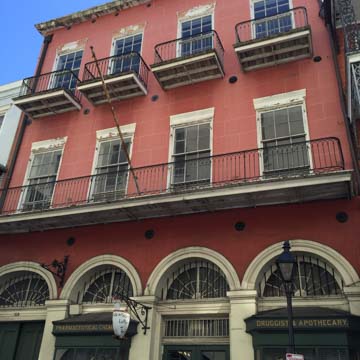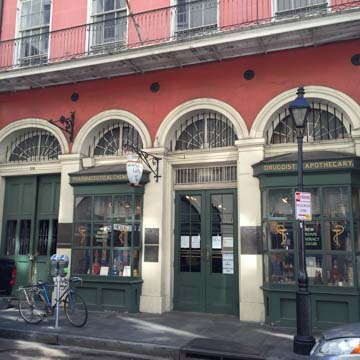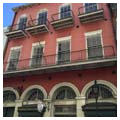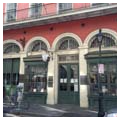Louis J. Dufilho Jr., one of the first licensed pharmacists (1816) in the nation (Louisiana passed a law in 1804 requiring a licensing examination for pharmacists), acquired the site on which the building now stands in 1822. The present building is either a remodeling of his apothecary shop and residence built in 1823, or a new structure of 1837. Dufilho’s apothecary shop and residence is in the style of a typical Creole-American town house. The three-story building is brick covered with plaster. Three large round-arched openings in the lower facade are matched by a similarly shaped carriage entrance at one side. An entresol between the first and second stories is lighted by the upper portion of the window arches. A botanical garden in the courtyard supplied Dufilho’s medicinal herbs. Dufilho sold the building and its contents in 1855 and it subsequently changed hands and uses several times. In 1937, then-mayor Robert S, Maestri purchased the building and donated it to the City, which restored it and opened it as a pharmacy museum in 1950. Since 1987, a nonprofit organization has operated the museum. The courtyard has recently been replanted with medicinal herbs.
You are here
Pharmacy Museum (Dufilho’s Pharmacy)
If SAH Archipedia has been useful to you, please consider supporting it.
SAH Archipedia tells the story of the United States through its buildings, landscapes, and cities. This freely available resource empowers the public with authoritative knowledge that deepens their understanding and appreciation of the built environment. But the Society of Architectural Historians, which created SAH Archipedia with University of Virginia Press, needs your support to maintain the high-caliber research, writing, photography, cartography, editing, design, and programming that make SAH Archipedia a trusted online resource available to all who value the history of place, heritage tourism, and learning.
























